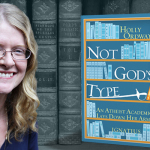Three False Christs: The Myth, the Mortal, and the Guru
by Carl Olson
Filed under Jesus
Albert Schweitzer, in the opening pages of his famous and influential 1906 book The Quest of the Historical Jesus, wrote, "And so each subsequent epoch in theology found its own ideas in Jesus, and could find no other way of bringing him to life. Not only epochs found themselves in him. Each individual recreated him in the image of his own personality."
Examples abound:
- Many atheists insist that Jesus didn't even exist or that, if he did, he is either lost in the mists of time or misused by Christian zealots.
- Rationalists tend to depict Jesus as a philosopher of good or questionable abilities and intentions.
- Socialists often present Jesus as a protoMarxist and liberation leader whose struggle was ultimately political, not religious or spiritual. Other leftists paint a portrait of Jesus the community organizer or community agitator.
- Denizens of the New Age realm regularly equate Jesus with Buddha and speak of "Christ-consciousness."
- Some Christians speak of a friendly, all-inclusive Jesus who hardly warrants interest, let alone worship, while others preach a Jesus who is judging and angry and hardly warrants charity, let alone discipleship.
Some of these "Christs" are simply false; some are, more specifically, also heretical. "Every heresy has been an effort to narrow the Church," wrote G. K. Chesterton in St. Francis of Assisi. Likewise, these heresies seek to narrow the person of Jesus Christ. Here, then, are three popular depictions of Jesus Christ that are not only flawed but dangerous to one's intellectual and spiritual health.
Jesus the Myth
The belief that Jesus Christ never even existed but was the creation of early Christians is increasingly common but also increasingly crude and crack-brained. It is summed up well enough by the skeptics at JesusNeverExisted. corn: "Christianity was the ultimate product of religious syncretism in the ancient world. Its emergence owed nothing to a holy carpenter. There were many Jesuses but the fable was a cultural construct."
The claim of syncretism is standard and has found its way into all sorts of popular fiction and entertainment, most notably The Da Vinci Code. The nonfiction The Pagan Christ: Recovering the Lost Light, written by former Anglican priest Tom Harpur, is a good example of an attempt at putting a scholarly veneer on the enterprise. Harpur argues that Christianity is almost entirely derived from ancient mystery religions–especially Egyptian–and based around Horus, the son of the goddess Isis. In turn, Harpur often draws upon the work of Gerald Massey, a 19th-century freethinker, who posited that true Christianity was thoroughly Egyptian in origin and Gnostic in theology. Harpur concludes that a human Jesus never existed but was created by a corrupt, power-hungry hierarchy, a recurring theme in such literature.
The roots of this approach go back to the 18th century, when Charles Francois Dupuis (1742-1809) wrote The Origin of All Religious Worship, one of the first attempts to show that all religions, including Christianity, are essentially the same and that Jesus was the mythical creation of early Christians drawing upon pagan myths. This position gained currency in the United States in the late 1800s with the publication of of The World's Sixteen Crucified Saviors (or Christianity before Christ), written in 1875 by Kersey Graves (1813-1883). Jesus, the book asserted, was not an actual person but a creation based on earlier stories of deities or god-men saviors who had been crucified and who descended to and ascended from the underworld. Graves, born into a Quaker family, was an atheist who employed spiritualism to gain insights into historical events and personages. His methods and findings have been thoroughly discredited–even by many atheist scholars–but his book continues to attract readers online.
The first part of the loth century was dominated by this tantalizing notion that pagan mystery religions, especially the mythology of "dying-rising" gods, had strongly influenced, or even produced, essential Christian doctrines. The most famous example of this obsession is Sir James G. Frazer's The Golden Bough, a 12-volume study of folklore and religion. But scholars in the mid- and late-20th century, such as the anthropologist (and Anglican cleric) E. O. James (1888-1972) questioned and eventually rejected these assumptions. Rigorous studies demonstrated that the pagan mystery religions of the Greco-Roman world were different in essential ways from those religions of the ancient Far East.
Yet this didn't stop Joseph Campbell (1904-1987) from writing a best-selling book, The Hero with a Thousand Faces (1949), and co-hosting a PBS program with Bill Moyers, The Power of Myth (aired 1988), that drew upon the same dubious streams of thought. Campbell popularized the notion of "monomyth," which refers to a basic pattern of a hero's journey found in many narratives from around the world; this idea, for example, influenced George Lucas in his creation of Star Wars.
More recently, the same mythological shtick was taken up by atheist Christopher Hitchens in his 2007 bestselling book God Is Not Great: How Religion Poisons Everything. Hitchens denied that the four Gospels have any historical value at all, falsely stated the Gospel authors "cannot agree on anything of importance," wrongly propounded that the "Gnostic gospels" give a "fractionally more credible" account than do the four Gospels, referred disdainfully to the "highly questionable existence of Jesus," said accounts of Jesus' life are "legend," and stated that the "Gospels are most certainly not literal truth." It's not surprising that his book cites the arguments of just one Christian scholar from the past hundred years, the Anglican apologist and author C. S. Lewis.
Hitchens was either unaware or dismissive of the abundance of studies from both Christians and non-Christians that Jesus of Nazareth did exist and that the Gospels do indeed provide information that historians take seriously as providing real accounts of real people doing real things. No reputable modern-day historian of the ancient world denies that Jesus of Nazareth existed, which is why Graham Stanton, in The Gospels and Jesus (Oxford University Press, 2002), wrote, "Today nearly all historians, whether Christians or not, accept that Jesus existed and that the Gospels contain plenty of valuable evidence which has to be weighed and assessed critically." The amount of textual evidence for the existence of Jesus is overwhelming, especially for an ancient historical figure. The more scholars learn about first-century Judaism, the more historically accurate the Gospels show themselves to be. In addition, the thoroughly Jewish character of Jesus' words and actions are further revealed, destroying the tenuous theories linking Jesus to Greek myths or Egyptian gods.
Jesus the Mere Man
That Jesus was merely mortal is now standard fare among those who cannot deny the basic historical evidence but reject the uniqueness of the man from Nazareth. The variations are many: Jesus was just a misguided prophet, a Cynic philosopher, a Jewish rabbi, a political zealot, an itinerant guru, an agitator for social change. This is hardly new. From the beginning, some doubted or mocked Jesus' claim to divinity: "They said, 'Is not this Jesus, the son of Joseph, whose father and mother we know? How does he now say, "I have come down from heaven"?'" (Jn 6:42). Jews, Romans, and other pagans of the early centuries mocked the first Christians for their belief that Jesus is the Son of God.
The role of the Reformation in this approach was significant. How? Anglican Scripture scholar N. T. Wright has noted that Martin Luther and other early Protestants were so intent on "the results" of Jesus' saving work they failed, in his words, to "ask about the theological significance of the ministry of Jesus" and also failed "to treat the Gospels with full seriousness, as they stand, that is, as stories" (Jesus and the Victory of God, 1996). Thus, Jesus was severed from his historical and cultural background as the emphasis was placed upon personal experience. "This is to know Christ, to know his benefits... . Unless one knows why Christ took upon himself human flesh and was crucified," asked Philipp Melanchthon (1497-1560), Luther's close friend and the first Protestant systematic theologian, "what advantage would accrue from having learned his life's history?"
The lineage from Protestant revolt to Enlightenment-era skepticism is not simple, but it is logical, and it is hardly a coincidence that 18th- and 19th-century German theology and philosophy were at the cutting edge of saying, in short, that Jesus "was just a man."
The philosopher Hermann Samuel Reimarus (1694-1768) believed in a deist God who did not intervene in any way in history. Reimarus therefore denied miracles and the Incarnation, arguing that Jesus was "a Jewish reformer who became increasingly fanatical and politicized, and he failed." His work is often cited as the beginning of the division between the "historical Jesus" and the Jesus of faith supposedly created by the early Church. The theologian Christian Baur (1792-1860 rejected all supernatural elements in the Gospels, presenting Jesus as a mere mortal combining Jewish religious beliefs with Greek philosophy. He concocted the influential theory that Peter and Paul led radically opposed wings of early Christianity, neither of which was true to Jesus' higher (but only mortal) consciousness.
In 1835 the precocious and polemical David Strauss. (1808-1874) wrote Das Leben Jesu, kritisch bearbeitet (The Life of Jesus, Critically Examined), the most influential "life of Jesus" of the 19th century. He presented Jesus as a fanatical Jewish preacher with delusions of messianic grandeur and insisted the Gospels were mostly legend and folklore. The influence of his bare-bones story of an itinerate preacher who proclaimed the Kingdom can be seen in the work of the modern-day Jesus Seminar, which has rejected as unhistorical or exaggerated nearly every narrative in the Gospels. Strauss is notable for interpreting Jesus' miracles as "mythical" in character, against rationalists (who found natural explanations for the miracles) and supernaturalists (who believed the miracles really were miracles).
Modern-day variations on this theme are numerous and appear in historical novels presented as well-researched and theologically sophisticated. The rogue historian Leigh Teabing, a main character in The Da Vinci Code, says, "[Jesus was] a mortal prophet . . . a great and powerful man, but a man nonetheless. A mortal." He and the novel's hero, Robert Langdon, declare that Jesus was "made" divine at the Council of Nicaea in A.D. 325 and that prior to that time no one–not even Jesus' followers–believed that he was the Son of God. Never mind the obvious evidence to the contrary (see Mt 1:23, 3:16-17; Jn 1:1ff, 5:18, 8:56ff, Jn 20, etc.). A more recent example is found in a novel, The Book of Rachael, written by "academic, ethicist, activist" Leslie Cannold, which depicts a Jesus who died not for man's sins but for his staunch feminist beliefs. Thus, Jesus is again presented as a mere mortal whose wrong-headed disciples attempt to deify him after his tragic death. The cases of Brown and Cannold are ample proof of Schweitzer's statement, "Each individual recreated [Jesus] in the image of his own personality."
The Gospels and New Testament do not depict Jesus as a radical feminist but do clearly present him as being somehow divine. Jesus, to take just one instance, states, "Truly, truly, I say to you, before Abraham was, I am" (Jn 8:58)
The Jews arguing with him understood what he meant, for they "took up stones to throw at him." What options exist, then, for the skeptic? C. S. Lewis famously offered the "trilemma" of "liar, Lord, or lunatic," to which Peter Kreeft has added "guru/teacher." And that is the third and final false Christ we will examine.
Jesus the Avatar
Jesus, according to this fallacy, is primary or completely "spiritual" in nature, one of many spiritual guides who have achieved an exalted state of spiritual enlightenment, free of doctrine, dogma, and authority. The ancient roots for this are found in Gnosticism, a broad movement that emerged in the second century against orthodox Christianity and that sought to reshape Christian doctrine by redefining key words and ideas.
"The first heresies," notes the Catechism of the Catholic Church, "denied not so much Christ's divinity as his true humanity (Gnostic Docetism)" (CCC 465). Docetism (from the Greek word for "appear") was the early Gnostic heresy holding that Jesus only appearedto have a body, whereas he was only spiritual, having attained freedom from the material realm. This essential premise is a constant among those who present Jesus as a spiritual guru, for they have little or no interest in the actions of Jesus in time and space. The "Gnostic scriptures," logically enough, have little or no historical narrative and are fixated instead on secret knowledge and hidden techniques of spiritual enlightenment.
The Jesus of the Gnostic writings is hardly recognizable as a Jewish carpenter, teacher, and prophet dwelling in first-century Palestine; instead, he is described as a phantom-like creature who lectures at length about the deficiency of aeons, the mother, the Arrogant One, and the archons–terms that only the Gnostic elite would comprehend. In some Gnostic texts Jesus and Christ are depicted as two separate beings: Christ coming from above and Jesus, coming from below, merely the bodily vessel that Christ dwelled in for a time on earth.
Something similar can be found in the Christ of the New Age movement, a movement that generally embraces pantheism or monism, the belief that "all is One" and this One is impersonal. An excellent and recent example can be found in the writings of the prolific Deepak Chopra, especially in his best-selling book The Third Jesus (2008; see "Chopra's Christ: The Mythical Creation of a New Age Panthevangelist" for a detailed review and critique). Chopra purposely seeks first to remove Jesus from any historical context and reality then detaches Jesus from theological reflection and doctrinal formulation. The "first Jesus," then, "is historical and we know next to nothing about him." Of course, Chopra goes on to say specific things about the historical Jesus but still insists that he is completely unknowable. Why? "This historical Jesus has been lost, however, swept away by history." Actual historical studies and evidence are not considered or even acknowledged; rather, this anti-historical approach is taken for granted, as something of an act of blind faith. The "second Jesus," says Chopra, is "the Jesus built up over thousands of years by theologians and other scholars." This Jesus, Chopra insists, "never existed" and "doesn't even lay claim to the fleeting substance of the first Jesus." Again, no evidence is offered and there is no engagement at all with the rich theological tradition of the Catholic Church. But this isn't surprising, as Chopra, like most New Age adherents, is anti-theological and anti-metaphysical. He considers theology to be either pointless or propaganda.
The "third Jesus" is Chopra's Christ, the epitome of a subjective savior, although Chopra has no need to be saved from sin and evil. Rather, "Jesus intended to save the world by showing others the path to God-consciousness." This journey to "God-consciousness" happens through "Christ-consciousness," the ambiguity of which can be tweaked and molded as one wishes to one's personal tastes. Christ the "guide" is a spiritually advanced being who helps seekers achieve "spiritual evolution." He is compared to or even joined in some way to Buddha. Chopra–having done away with history and theology–conveniently sees no difference between the two, stating that "the Christian seeker who wants to reach God is no different from the Buddhist. Both are directed into their own consciousness."
Since the emphasis in Gnosticism and in the New Age movement is on elite teaching, the death of Jesus and his Resurrection from the dead are of little or no importance. The result is that a significant part of the Gospels–about a quarter of those texts–is simply ignored or dismissed as irrelevant. Since historical context is of no interest, specific details from the Gospels are either ignored or wildly misinterpreted. Chopra, for example, enjoys interpreting texts about "light" in a most hazy and vague manner, ignoring the fact that references to light in the Gospel of John are in the context of Genesis 1, the Feast of Lights, and the Shekinah glory of God.
Ultimately, this false Christ is part of the tired but popular theme, "Religion is bad, spirituality is good." It is highly individualistic and unrelentingly subjective; it is openly opposed to logic, history, and traditional authority. One might say that it is the result of faith divorced from reason, but only if that "faith" is understood to be, finally, in oneself as a part of an impersonal, cosmic whole.
God, Made in Man's Image
These three false Christs are rooted in three faulty views of God and the world: atheism, deism, and pantheism. Each fails, in essential ways, to take seriously as historical events what is described in the Gospels and proclaimed by the Church. The importance of this is stressed by Pope Benedict XVI in the first volume of Jesus of Nazareth: "For it is of the very essence of biblical faith to be about real historical events. It does not tell stories symbolizing suprahistorical truths, but is based on history, history that took place here on earth."
Each false Christ also results from a failure to see the entire picture and take into account all of the historical information. "If you want to understand the Scripture in the spirit in which it is written," wrote Benedict XVI, "you have to attend to the content and to the unity of Scripture as a whole." In addition, each misunderstands or misrepresents the social, religious, political, and cultural context of first-century Palestine. Ignored or overlooked is the Jewish character of Jesus' teaching and how it is nearly impossible to get an accurate sense of who Jesus is without some understanding of the Old Testament and first-century Judaism.
Finally, each of these false Christs relies, to one degree or another, on a subjective or esoteric way of reading and interpreting Scripture. Put another way, each rejects the authority and teaching office of the Catholic Church. Jesus Christ cannot be rightly understood and defended apart from Scripture, and Scripture cannot be rightly read and interpreted outside the Church. Otherwise we simply recreate Christ in the image of our own personality, which is not and cannot be a basis for objective and ultimate truth.
Related Posts
Note: Our goal is to cultivate serious and respectful dialogue. While it's OK to disagree—even encouraged!—any snarky, offensive, or off-topic comments will be deleted. Before commenting please read the Commenting Rules and Tips. If you're having trouble commenting, read the Commenting Instructions.













